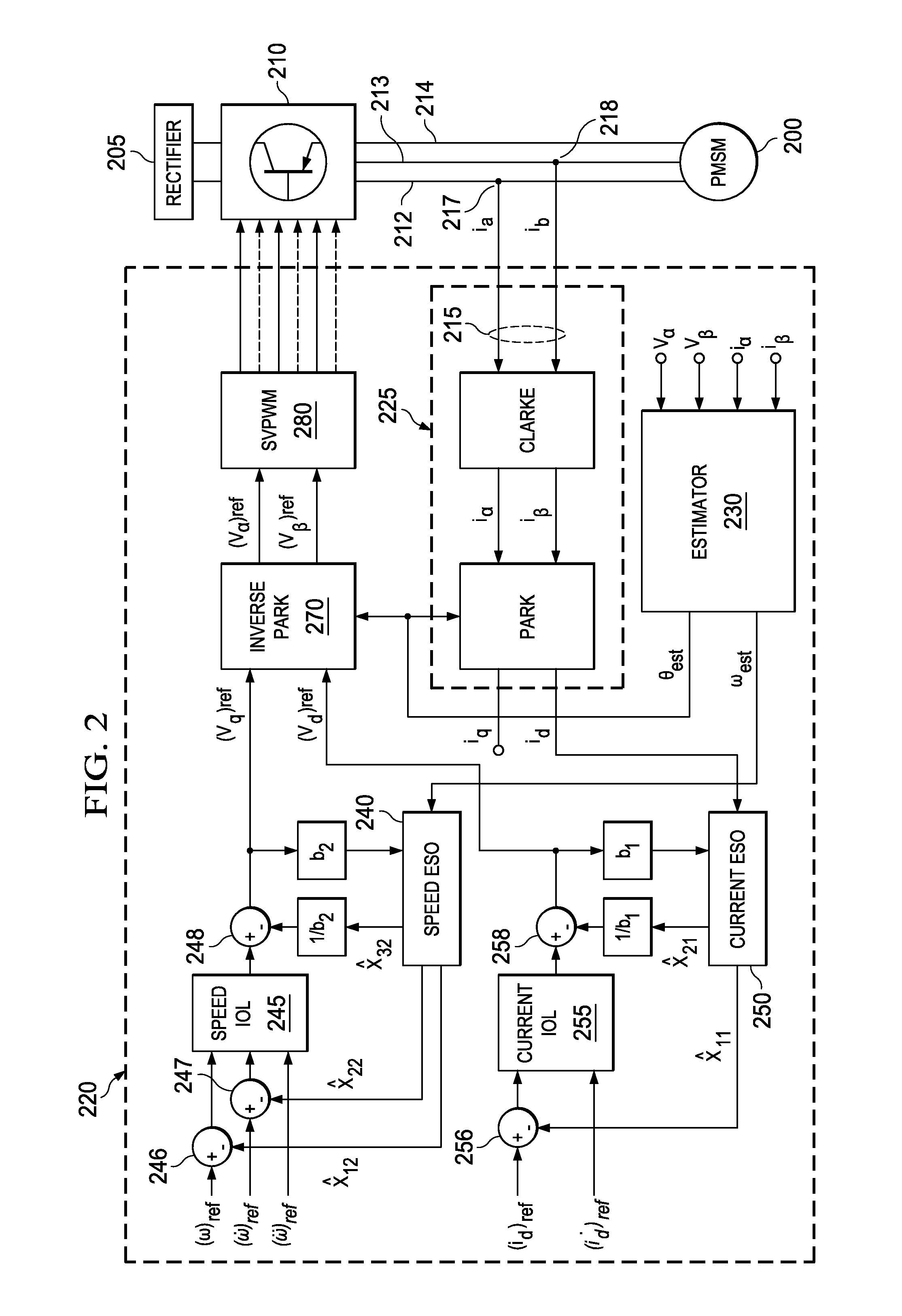Automated Motor Control
a technology of automatic motor control and motor control, which is applied in the direction of motor/generator/converter stopper, dynamo-electric converter control, dynamo-electric gear control, etc., can solve the problems of reducing the robustness and disturbance rejection properties of the controller, time-consuming and laborious manual tuning of the controller, and often insufficient control system expertise, so as to reduce the total number of controllers
- Summary
- Abstract
- Description
- Claims
- Application Information
AI Technical Summary
Benefits of technology
Problems solved by technology
Method used
Image
Examples
Embodiment Construction
[0017]Referring now to the drawings, and in particular to FIG. 1, a prior approach to motor control will be described to help illustrate the advances described herein. In FIG. 1, a PMSM 100 is controlled using a traditional PI-based field oriented control approach. A rectifier 105 provides power to an inverter 110. The inverter 110 includes various gates or switches to take power from the rectifier 105 and apply power to current paths 112, 113, 114 for the three windings of the motor 100. The inverter 110 is controlled by the receipt of control signals from a control device 120. Current for the motor 100 is sensed (ia and ib) and transformed using the known mathematical transform, Clarke-Park transformation 125, to obtain feedback values iq and id. An estimator 130 takes available motor current (iα and iβ) and applied voltage (Vα and Vβ) values and outputs estimated rotor position θest and speed ωest. The estimated rotor position θest is used in the Park transformations. The estimat...
PUM
 Login to View More
Login to View More Abstract
Description
Claims
Application Information
 Login to View More
Login to View More - R&D
- Intellectual Property
- Life Sciences
- Materials
- Tech Scout
- Unparalleled Data Quality
- Higher Quality Content
- 60% Fewer Hallucinations
Browse by: Latest US Patents, China's latest patents, Technical Efficacy Thesaurus, Application Domain, Technology Topic, Popular Technical Reports.
© 2025 PatSnap. All rights reserved.Legal|Privacy policy|Modern Slavery Act Transparency Statement|Sitemap|About US| Contact US: help@patsnap.com



